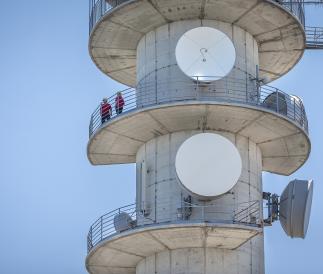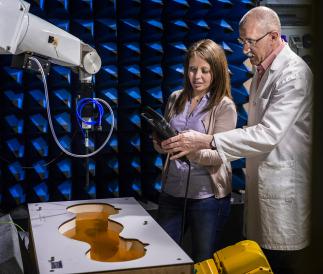Mobile broadband
TIM Brasil offers its customers solutions that allow processes to be made more efficient, technological innovation to be improved and competitiveness to be boosted, while increasing the number of jobs available.
TIM Brasil therefore has a positive influence on the development of Brazilian society. All these factors have a positive impact on well-being and the growth of Gross Domestic Product (GDP). An authoritative study entitled “The Mobile Economy - Latin America 2014”, conducted by the GSM Association, revealed that throughout South America the incidence of the mobile phone industry on the trend in overall GDP is significant and growing; more specifically:
- in 2013, the mobile sector accounted for 4.1% of overall GDP;
- by 2020, the percentage will increase to 4.5%;
- the 2013 figure includes a direct impact (1.35%) and an indirect impact (2.75%); in other words the indirect impact is twice the direct one;
- the impact on the resulting society is considerable. In particular, the mobile sector employs around 2.2 million people, including around 1 million direct jobs and around 1.2 million indirect ones (ratio 1:1.27).
TIM Brasil in particular contributes to producing around 0.4% of Brazilian GDP, if only the direct impact is considered, but if this is added to the indirect impact, its total contribution is 1.1%. The Company’s activities generate direct employment for almost 10,000 people in Brazil, while the indirect impact in terms of jobs generated is estimated to more than 12,500 (higher than average for South America).
In 2016, the efforts made by TIM Brasil focused on:
- expansion: increasing the capacity of existing aerials, installing new aerials and expanding the fibre optic network;
- increment both in customers and 4G traffic;
- excellent cost control with savings goals flanked by focussed investments in technology;
- increment both in customers and the traffic they generate, particularly in 4G technology.
In the past 5 years alone, TIM has invested more than 23 billion reais in Brazil, focusing primarily on building new generation infrastructure and actively contributing to the modernisation of the country.
In recent years, TIM has strengthened its infrastructure further, in order to support the growth in data, focusing in particular on 4G technology, which offers better quality of service. These important investments have allowed TIM to strengthen its leadership in 4G, in terms of the percentage of people reached and the number of towns and cities covered. As of the end of 2016, TIM covers 95% of the Brazilian urban population, with a presence in over 3,460 towns and cities. In particular, 89% of the urban population is covered by 3G technology and 74% by 4G.

























